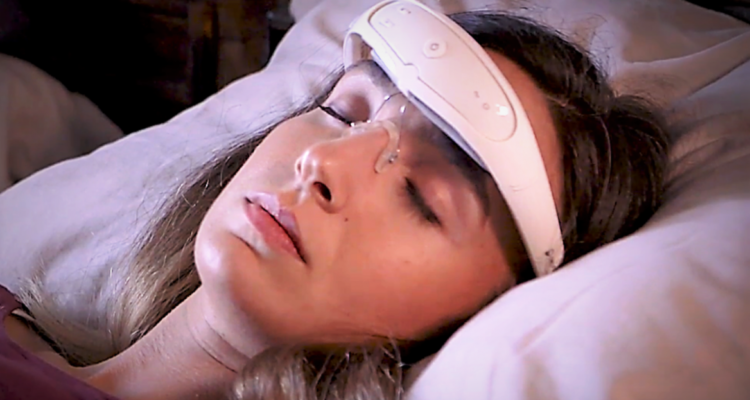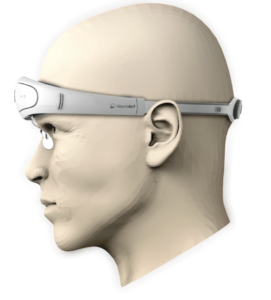
Israeli neuro-modulation device may spell end to migraines
It may look like Geordi’s visor in Star Trek, but Neurorelief’s device shows promise in treating migraines.
By Brian Blum, Israel21c
Fourteen percent of American adults suffer from migraines or severe headaches. Among women aged 18 to 44, the number soars to 23%. There is no cure for migraines, and over-the-counter pain relief medicines do not always work.
One of the most promising treatments is occipital nerve stimulation, where a small pulse generator is implanted at the base of the skull to send pain-relieving electrical impulses to the brain.
Neurolief is developing a noninvasive neuro-modulation device that could be available for purchase in your local pharmacy for less than $500. The device looks a bit like Geordi’s visor in Star Trek: The Next Generation, except it sits on top of the head.
The Neurolief neuro-modulator stimulates six different nerve branches in the brain that regulate pain and mood. Each electrode in the device delivers a charge strong enough to penetrate the skull.
“It needs to be done without causing pain to the patient and not causing damage to scalp tissue,” Dar tells ISRAEL21c.
By “dose,” Dar explains that the device can dial up and down the six electrodes individually, holding out the possibility to create a treatment plan personalized for each patient.
Neuro-modulation prevents the secretion of chemicals in the brain that trigger pain. But it also modulates the “activation threshold” of the neural system, so that the next time a migraine trigger is present (whether that’s stress, lack of sleep or even chocolate), the nerves will not react as severely as before. Neuro-modulation is mostly side-effect free.
80% pain reduction
One study of the product conducted last year demonstrated an average 80% reduction in pain symptoms. That’s double the rate for implanted devices and far more than a couple of Tylenols can achieve.
The Neurolief device is meant to be used only during a migraine attack. Since it can fold up to the size of a sunglasses case, it’s small enough to carry in a purse or backpack.
Dar and Shany are not newcomers to the field of neuro-modulation. The two started and sold NESS-Neuromuscular Electrical Stimulation Systems, a company that builds neuro-modulation products to help stroke survivors move paralyzed arms and legs.
After NESS’s new owners moved most of the company’s operations to California, Dar and Shany were free to develop their own non-competing neuro-modulation device.
Neurolief has developed a novel pricing model. Instead of purchasing the device for a one-time fee, patients will buy it “pre-loaded” with a certain number of treatments (10 to start).
“It’s like buying a blister pack of medications,” VP of business development and marketing Eran Schenker tells ISRAEL21c.
If the device works for you, you can “turn on” more neuro-modulation doses remotely via the Internet. “It won’t cost more than the pills you already get,” Schenker adds.
There are still a few trials to complete, including a study with 56 patients now underway. The company hopes to apply for a European Union CE mark by the end of 2018, with application to the FDA for approval in the US to follow.
Next target: depression
Neurolief started by targeting migraines because the clinical evidence from implanted devices has already demonstrated that neuro-modulation works. But the same neuro-modulation techniques can be used for other indications.
Next on Neurolief’s list is depression. Dar reports “remarkable results” from a clinical trial at a mental hospital in Israel. Neurolief’s anti-depression model could come as early as 2020.
“At the end of the day, we will have a solution for multi-indications, although each needs its own regulatory approval and may need a different device,” Dar says.
In the meantime, the company is inching closer to giving migraines the boot from your brain.
Source: World Israel News
